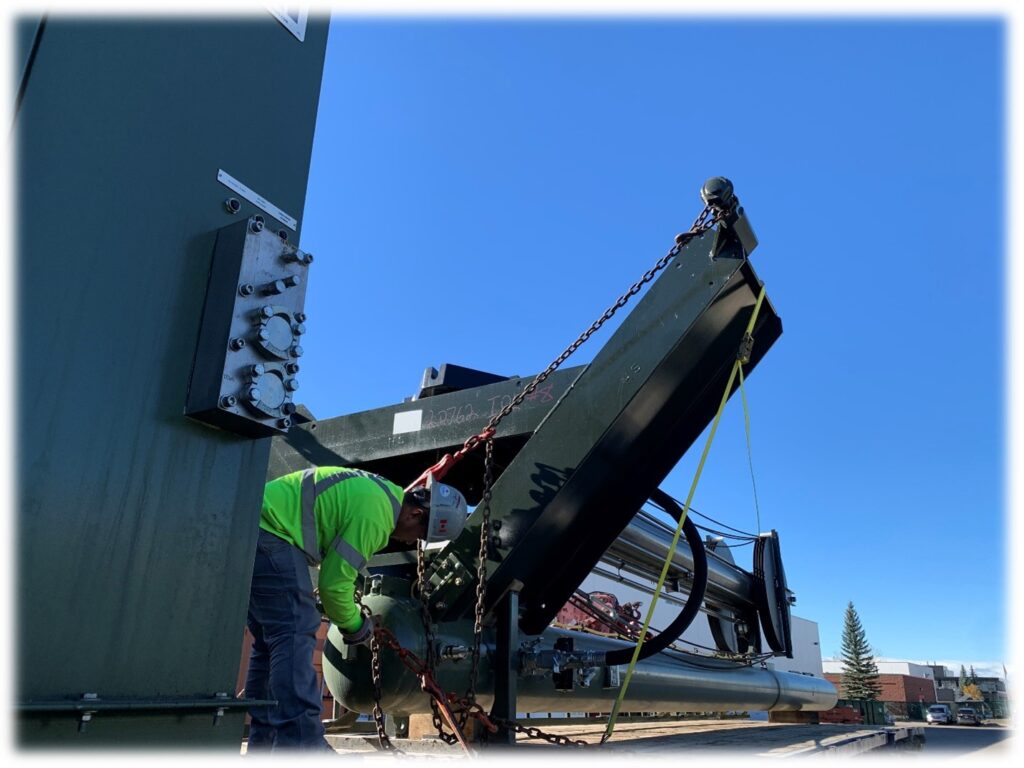When comparing actual costs for Artificial Lift Equipment, it is very common to focus on the capital costs or initial cost to acquire the equipment, but the real costs that needs to be measured is the full scope of supply, cost of transportation, the installation costs which include the Piles, Concrete Bases as well as the cranes and auxiliary equipment required for an installation and the Through Life Cost.
We shipped eight units from SSi Calgary today destined for a Facility in Alberta, Canada. These units are a Model 600 (60,000ls Lift Capacity and 336-inch stroke length) with a 200 Horse Power Control Unit. Everything that is required for the installation is contained on one truck.
Similar ALS Long Stroke Rod systems require two or three trucks, this is a massive cost saving for the Client in shipping. For this client, the cost savings for eight wells were just under $100,000 for the four units compared with other forms of Long Stroke Rod Lifting systems,
The Model 600 Pump is assembled and tested prior to shipping so there is only one lift required during the installation. Not only does this greatly reduce the safety aspects with less pinch points but as it weighs 18,590 Lbs., it requires a much smaller crane offering further cost savings for the operator. If the well is prepared in advance, the installation of the Model 600 and HPU can be achieved in as little are four hours, allowing a much speedier time for first production.

These units are operating at 5 strokes per minute and producing between 2,500 and 3,300 BBls. per day but the Beam Pumps adjacent to these units are operating at 9 or 10 strokes per minute. On the assumption that the rods and downhole equipment will fail at the same number of cycles, the SSi Units operating at approximately half the speed for similar production, infers the time between well intervention is double allowing further substantial cost savings. The electric motors are not continuous, they reverse at the top and bottom of the strokes and measured electrical usage is far less so not only are there savings, but this also contributes to reduced CO2 Emissions.
The unit has a jog function that allows the Downhole Pump to be unseated and raised to a safe position, this allows the operator to safely steam the well without the rods and pumps having to be removed from the well. This saves in the use of a flush by or similar Rig to be used for the function.
Regarding the operational costs, balancing the SSi pumping unit must be done when the unit is running, which only takes only 15 minutes. No crane or even man basket is required. In comparison to regular beam pumps in which at least half a day job where both crane and man baskets is required, and production must be stopped this means further cost savings.
Changing stroke length is another cost saving in SSi unit which is happening while the unit is running and is done only by the unit touch screen. If the Beam Pump requires and change in stroke length, the unit must stop allowing the stroke length to be changed using cranes and man baskets. This takes at least half of one day with a full crew incurring increased costs and a loss of production.
Summary of the Cost Savings
- Less Shipping Costs
- Faster and safer Installation with Reduced Crane and Assembly Costs
- To Balance the SSi Unit, the production is never interrupted
- Increase longevity of the Rods and Downhole Equipment
- Lower Electrical Costs and Lower C02 Emissions
- Lower Thru life Costs.
